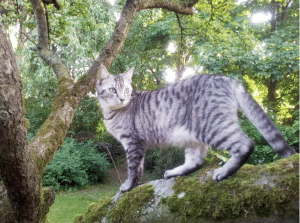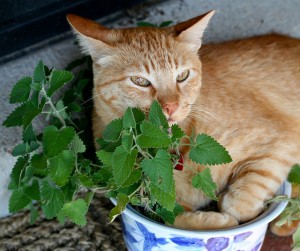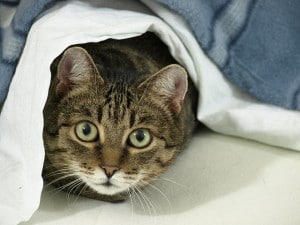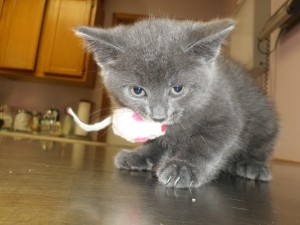
Perhaps you’ve observed your furry companion gazing almost wistfully at the great outdoors from behind the window and wondered, “What’s the harm in letting the poor little guy roam outside?” Many cat owners wonder if it’s cruel or unnatural to keep their feline friends cooped up indoors every day. Some feel that it is more humane to allow their pet to wander freely outside and return home at their leisure. As ideal as it sounds, there are actually quite a few consequences to this course of action!
First, let’s consider your pet’s safety: parasites, disease, cars, and other animals all pose significant threats to an outdoor cat—not to mention cruel people who abuse or kill wandering animals for “sport.” Outside of the security of your home, your cat is exposed to a variety of dangers and nuisances such as fleas, ticks, upper respiratory infections, feline distemper, and other health issues. No one wants to think about their beloved animal in discomfort or pain, but it’s important to be aware of these hazards.
Besides the health risks posed to your cat, there is also the issue of potential damage to the local environment. Has your furry friend ever brought you a “gift” in the form of a mangled mouse or battered bird? While it’s certainly beneficial to have this kind of pest control inside of the home, it is harmful and unnecessary outside of the house. According to American Humane Association, outdoor cats are estimated to kill hundreds of millions of birds each year, “yet birds are believed to be only 20 percent of the wildlife [they] kill.” This is especially concerning when the populations of native species begin to dwindle. Animal lovers should care about the well-being of both pets and wildlife!
So, should you let your cat wander freely, or should you bar all of the exits? Is there a middle ground? Let’s look at a few ways to keep frisky felines happy and stimulated inside of the home:
-
New toys! Satisfy your little hunter’s instincts by providing him or her with an interactive toy to chase (laser pointers, for example).
-
New friend! Have you thought about finding a compatible cat or dog to keep your current kitty company?
-
Posts, perches, and hiding places! Cats need designated surfaces on which to flex those claws, so be sure to provide them with some good scratching posts. Perches and fun, low-cost hiding places (such as cardboard boxes) are purr-fect for nice views and peaceful havens.
If you still feel that your companion deserves a little fresh air and time in nature, there is always the option of using a leash! Adult supervision, as well as the proper vaccinations from a cat veterinarian, will allow your feline to enjoy the great outdoors without the negative side effects. If your cat needs to be vaccinated, or if you have any questions regarding your furry friend, get in touch with the professionals at The Cat Clinic at Cherry Hill! Call (856) 662-2662 today.






